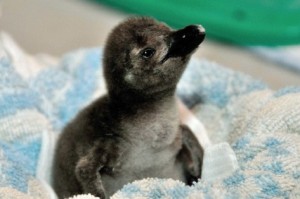The closest relatives of the South African Penguins are the Humboldt and Magellanic Penguins, and all are found near or south of the equator. South African Penguins are found on the southwestern coast of Africa, but they live in colonies on 24 islands in colonies. These colonies are suitable habitats for African Penguins because they lay their eggs on rocky and sandy coastal islands, but they need close shores to hunt in the nutrient-rich cold waters.
South African Penguins have several natural predators, including sharks, seals and killer whales. Land-based enemies include mongoose, genet and even cats and dogs. Additionally, Kelp Gulls often steal the eggs and newborn chicks of African Penguins.
Unlike many wild animals, South African Penguins are one of the only few species to mate for life. The animals begin mating between 2 and 6 years of age, and the lifelong partners take turns caring for the chicks and protecting the eggs. Sometimes, the partners return to the same colony and even the same nest year after year to lay eggs and raise their young. After chicks are hatched, they are under constant watch by their parents, and at about 30 days old, both the chicks and parents can go to sea together. Sometimes, chicks stay on the beach, but form groups called creches to reduce attacks on chicks.
African Penguins typically live 10-15 years in the wild. They may travel a great distance for their food, possible up to 110 km. They can swim about 7 km/hour and can reach maximum speeds of about 20 km/hour. When they dive for fish, their average dives last about two and a half minutes. Typically, these dives are about 30 m deep, but dives as deep as 130 m have been recorded.
http://en.wikipedia.org/wiki/African_penguin
http://www.penguins.cl/african-penguins.htm
http://www.neaq.org/animals_and_exhibits/animals/african_penguin/index.php
http://blog.goodosphere.com/?p=723
http://www.citynews.ca/2012/03/09/baby-penguin-born-at-toronto-zoo/







